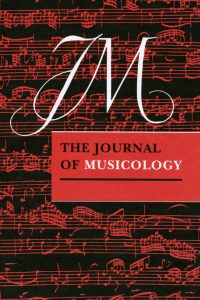Author: Fisher, Alexander
Publication details: Journal of Musicology 18, no. 4 (Fall 2001): 616–57
Weblink: http://www.jstor.org/stable/10.1525/jm.2001.18.4.616
Abstract
In the late 16th and early 17th centuries, the city government of Augsburg, Germany, struggled to maintain religious peace as the confessional boundaries between its Catholic and Protestant communities hardened. As tensions gradually rose, city officials feared and scrutinized the disruptive potential of the psalms and chorales sung by Augsburg’s Protestant majority. Those suspected of owning, singing, or distributing inflammatory songs were subject to imprisonment, interrogation, torture, and exile. When an Imperial decree established a fully Catholic city government in March 1629, the authorities tightened this scrutiny, banning Protestant singing entirely in public and private and using a network of informants to catch violators. A remarkably well-preserved collection of criminal interrogation records in Augsburg dramatizes city officials’ concern about religious song and their attempts to restrict its cultivation through coercive measures. These records, which preserve the testimony of suspects and witnesses as well as original evidence (such as manuscript or printed songs), show the ways in which local authorities tried to control singing that they felt threatened the public peace. At the same time, these sources give us unparalleled insight into the production, performance, and circulation of religious songs. Although the interrogations reveal much about how and where songs—often contrafacta of well-known psalms or chorales—were written and performed, the authorities were especially intent on finding out how they originated, who bought, sold, and sang them, and why. These exchanges between interrogators and suspects provide a starting point for an analysis of the relationship between singing, religion, and criminality in an early modern urban environment.
